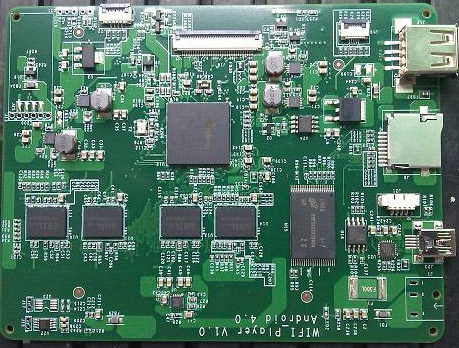Why PCBA cleaning is more and more important is because PCBA processing pollutants are harmful to circuit boards. Today, we will analyze in detail the harm of PCBA processing pollutants to circuit boards. Some ionic or non-ionic pollution will be generated during processing, which is popular. That is, some visible or invisible dust, when exposed to a humid environment or the presence of an electric field, it will cause chemical corrosion or electrochemical corrosion, resulting in leakage current or ion migration, which will affect the performance and life of the product. .
Pollution may directly or indirectly cause PCBA potential risks, such as the organic acid in the residue may cause corrosion to PCBA; the electric ions in the residue may cause the movement of electrons due to the potential difference between the two pads during the electrification process. It may form a short circuit and cause the product to fail;

residues will affect the coating effect, and cause problems such as inability to coat or poor coating; it may also be temporarily undetectable. After time and environmental temperature changes, coating cracks, The skin is warped, causing reliability problems.
1. Corrosion
After electron probe analysis, it was found that in addition to carbon, oxygen and lead-tin components on the surface of the solder joints, there was also halogen (Cl) detected in excess of the normal content. The action of this halide ion, with the help of air and moisture, will cyclically corrode the solder joints, and eventually form white porous lead carbonate on the surface and surroundings of the solder joints. The solder joints at the failed parts have become white, discolored and porous. If the PCBA is assembled due to the use of iron substrate bottom lead foot components, the iron substrate lacks solder bottom coverage, and Fe3+ will be quickly generated under the corrosion of halogen ions and moisture, which will make the board surface red.
In addition, in a humid environment, acidic ionic pollutants can directly corrode copper leads, solder joints and components, causing electrical failure.
2. Electromigration
If there is ion contamination on the PCBA surface, electromigration is prone to occur, and the ionized metal moves between the opposite electrodes and reduces to the original metal at the reverse end, resulting in a dendritic phenomenon called dendritic distribution (dendrites, Dendrites, tin whiskers), the growth of dendrites may cause local short circuits in the circuit.
If silver-containing solder is used on the PCBA, electromigration is more likely to occur after the silver is corroded into silver ions, and the PCBA that has failed electromigration often returns to normal after necessary cleaning.
3. Poor electrical contact
In the PCBA assembly process, some resins such as rosin residues often contaminate the gold fingers or other connectors. When the PCBA is working hot or in a hot climate, the residues will become sticky and easy to absorb dust or impurities, which will increase the contact resistance. Large or even open circuit failure. The corrosion of the nickel layer on the PCB surface pad in the BGA solder joint and the presence of the phosphorus-rich layer on the surface of the nickel layer reduce the mechanical bonding strength of the solder joint and the pad, and cracks occur when subjected to normal stress, resulting in electrical contact failure.